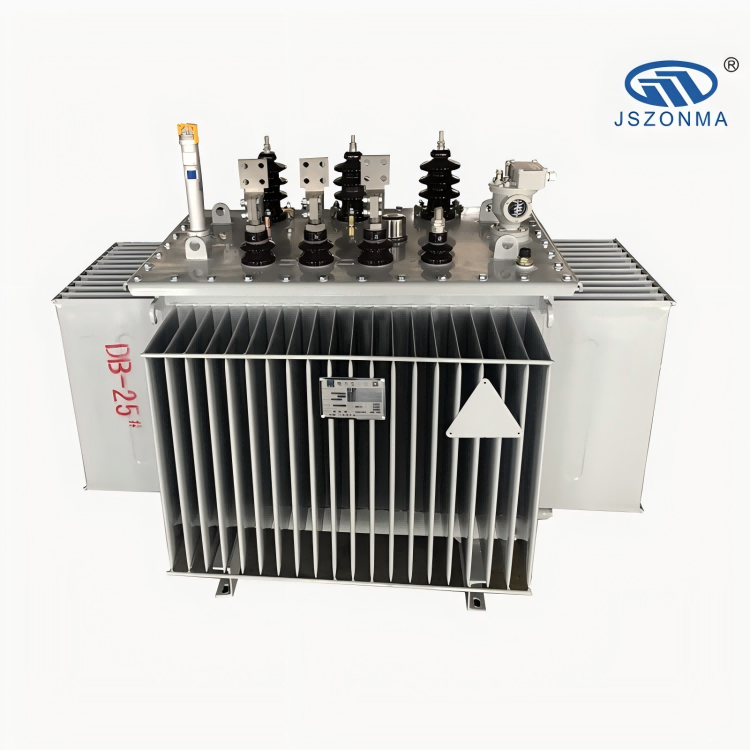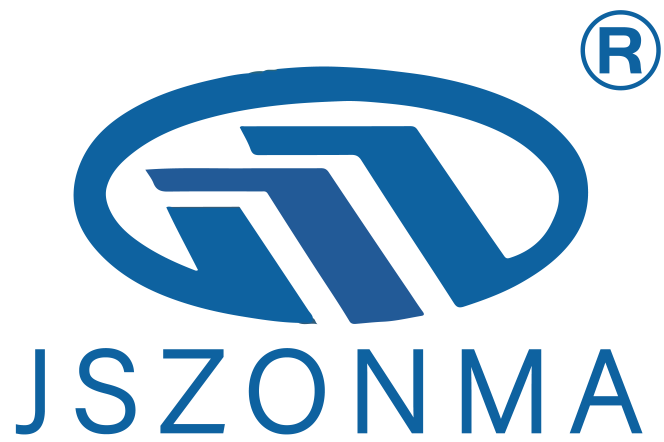Selecting the appropriate power transformer for your electrical infrastructure represents one of the most critical decisions in modern industrial and commercial operations. As we advance into 2025, the complexity of electrical systems continues to evolve, demanding more sophisticated approaches to transformer selection. Understanding the fundamental principles, technical specifications, and operational requirements will ensure optimal performance, reliability, and cost-effectiveness throughout the transformer's operational lifespan. This comprehensive guide provides essential insights for engineers, facility managers, and procurement professionals tasked with making informed transformer selection decisions.

Understanding Power Transformer Fundamentals
Basic Operating Principles
Power transformers operate on the principle of electromagnetic induction, utilizing primary and secondary windings wrapped around a magnetic core to transfer electrical energy between circuits at different voltage levels. The efficiency of this energy transfer depends heavily on core material selection, winding configuration, and insulation systems. Modern power transformer designs incorporate advanced materials such as grain-oriented silicon steel cores and high-temperature superconducting windings to maximize efficiency while minimizing losses. Understanding these fundamental operating principles enables informed decision-making regarding transformer specifications and expected performance characteristics.
The magnetic flux generated within the transformer core creates the essential link between primary and secondary circuits, with the turns ratio determining voltage transformation characteristics. Proper core design ensures minimal hysteresis and eddy current losses, directly impacting overall transformer efficiency and operational costs. Additionally, the insulation system must withstand electrical, thermal, and mechanical stresses throughout the transformer's expected service life, making material selection and design optimization crucial factors in long-term reliability.
Classification Systems and Applications
Power transformers are classified according to various criteria including voltage ratings, cooling methods, construction types, and intended applications. Distribution transformers typically handle voltage levels up to 35 kV and serve local distribution networks, while transmission transformers operate at higher voltage levels exceeding 35 kV for long-distance power transfer. Specialty transformers include instrument transformers for measurement and protection, auto-transformers for voltage regulation, and isolation transformers for safety applications in sensitive environments.
Each classification serves specific operational requirements and environmental conditions. Indoor transformers require compact designs with effective ventilation systems, while outdoor units must withstand weather exposure and temperature variations. Understanding these classification systems helps identify the most suitable transformer type for specific installation requirements, ensuring optimal performance and regulatory compliance throughout the operational period.
Critical Technical Specifications
Voltage and Current Ratings
Accurate determination of voltage and current ratings forms the foundation of proper power transformer selection. Primary voltage ratings must match the incoming power supply characteristics, while secondary voltage ratings should align with load requirements and distribution system specifications. Current ratings depend on the total connected load, anticipated growth factors, and operational diversity considerations. Engineering calculations must account for both steady-state and transient conditions to ensure adequate capacity during normal operations and fault conditions.
Voltage regulation capabilities significantly impact power quality and system stability. Transformers with tap changing mechanisms provide voltage adjustment capabilities to compensate for supply variations and load changes. On-load tap changers enable voltage adjustment during operation, while off-load tap changers require system shutdown for adjustments. Proper specification of voltage regulation requirements ensures consistent power quality and optimal equipment performance across varying operational conditions.
Power Ratings and Efficiency Standards
Power ratings expressed in kilovolt-amperes (kVA) or megavolt-amperes (MVA) define the transformer's capacity to handle electrical loads safely and efficiently. Proper sizing requires careful analysis of connected loads, future expansion plans, and operational diversity factors. Oversized transformers operate at reduced efficiency and increased costs, while undersized units risk overloading and premature failure. Modern efficiency standards such as DOE 2016 regulations mandate minimum efficiency levels for distribution transformers, driving technological improvements and operational cost reductions.
Efficiency calculations must consider both no-load losses occurring continuously and load losses that vary with transformer loading. High-efficiency designs incorporate advanced core materials, optimized winding configurations, and improved cooling systems to minimize operational losses. The total cost of ownership analysis should include initial purchase price, installation costs, and projected energy losses over the transformer's expected service life to identify the most economical solution.
Environmental and Installation Considerations
Location and Mounting Requirements
Installation location significantly influences transformer selection criteria, affecting cooling requirements, protection systems, and maintenance accessibility. Indoor installations require adequate ventilation, fire protection systems, and space for maintenance activities. Outdoor installations must withstand environmental conditions including temperature variations, moisture, pollution, and seismic activity. Proper site preparation includes foundation design, drainage systems, and security measures to protect the equipment throughout its operational life.
Mounting configurations vary from pad-mounted units suitable for underground distribution systems to pole-mounted transformers for overhead applications. Each mounting type presents specific advantages and limitations regarding installation costs, maintenance requirements, and operational flexibility. Site accessibility affects transportation logistics, installation procedures, and ongoing maintenance operations, making location analysis a critical factor in transformer selection and project planning.
Cooling System Selection
Cooling system design directly impacts transformer capacity, efficiency, and reliability under various operating conditions. Natural air cooling systems rely on convection for heat dissipation and offer simplicity with minimal maintenance requirements. Forced air cooling systems utilize fans to enhance heat transfer capabilities, enabling higher power ratings in compact designs. Oil-immersed cooling systems provide superior heat transfer and insulation properties for high-voltage applications, requiring specialized maintenance procedures and environmental considerations.
Advanced cooling technologies include direct water cooling systems for high-capacity applications and hybrid cooling systems combining multiple heat transfer mechanisms. The selection of appropriate cooling systems depends on ambient conditions, space constraints, noise limitations, and maintenance capabilities. Proper cooling system specification ensures reliable operation under maximum load conditions while minimizing operational costs and environmental impact throughout the service period.
Safety and Regulatory Compliance
Electrical Safety Standards
Compliance with electrical safety standards ensures personnel protection and equipment reliability throughout the transformer's operational life. IEEE standards provide comprehensive guidelines for transformer design, testing, and installation procedures. National Electrical Code (NEC) requirements specify installation practices, grounding systems, and protection coordination to minimize electrical hazards. Understanding and implementing these standards prevents accidents, reduces liability exposure, and ensures regulatory compliance across all project phases.
Protection systems including overcurrent devices, ground fault protection, and surge arresters must coordinate with transformer characteristics to provide effective fault clearing and equipment protection. Proper grounding system design ensures electrical safety and reduces the risk of electrical shock hazards. Regular testing and maintenance procedures verify continued compliance with safety standards and identify potential issues before they compromise system reliability or personnel safety.
Environmental Regulations
Environmental regulations governing power transformer installations continue to evolve, addressing concerns about insulating fluids, noise emissions, and electromagnetic fields. PCB regulations restrict the use of certain insulating fluids and require proper handling of legacy equipment. Noise ordinances limit acceptable sound levels, particularly for installations near residential areas, influencing cooling system design and enclosure specifications.
Electromagnetic field regulations establish exposure limits for personnel and the general public, affecting transformer location and shielding requirements. Spill containment systems prevent environmental contamination from insulating fluids, requiring specialized construction and maintenance procedures. Compliance with environmental regulations protects public health, minimizes environmental impact, and ensures project approval through regulatory processes.
Economic Analysis and Total Cost Ownership
Initial Investment Considerations
Initial investment analysis encompasses transformer purchase price, installation costs, and supporting infrastructure requirements. Higher efficiency transformers typically command premium pricing but provide long-term operational savings through reduced energy losses. Installation costs vary significantly based on location accessibility, foundation requirements, and electrical connection complexity. Supporting infrastructure including switchgear, protection systems, and monitoring equipment adds substantial costs that must be considered in total project budgeting.
Financing options including purchase, lease, or power purchase agreements affect cash flow and project economics. Utility incentive programs may offset initial costs for high-efficiency equipment, improving project returns. Careful analysis of upfront investments, financing costs, and available incentives enables optimal financial structuring and technology selection decisions that align with organizational objectives and budget constraints.
Operational Cost Analysis
Operational costs include energy losses, maintenance expenses, and replacement reserves throughout the transformer's service life. No-load losses occur continuously regardless of loading conditions, while load losses vary with transformer utilization patterns. Energy cost projections must consider utility rate structures, demand charges, and anticipated electricity price escalations over the analysis period. Maintenance costs encompass routine inspections, oil testing, cooling system service, and major overhaul requirements.
Reliability costs associated with unplanned outages can significantly exceed routine operational expenses, making reliability analysis crucial for economic optimization. Higher quality transformers typically provide improved reliability and longer service life, justifying premium pricing through reduced replacement frequency and outage costs. Comprehensive lifecycle cost analysis identifies the optimal balance between initial investment and operational expenses to minimize total ownership costs.
Selection Process and Decision Framework
Requirements Definition
Systematic requirements definition establishes the foundation for informed transformer selection decisions. Load analysis determines capacity requirements, voltage levels, and operational characteristics necessary for reliable system performance. Future growth projections ensure adequate capacity for anticipated load increases and system modifications. Environmental conditions including temperature ranges, altitude, pollution levels, and seismic requirements influence design specifications and material selection.
Operational requirements encompass maintenance accessibility, monitoring capabilities, and integration with existing control systems. Regulatory compliance requirements vary by location and application, affecting design standards and testing procedures. Clear documentation of all requirements enables effective communication with suppliers and supports objective evaluation of competing proposals during the selection process.
Vendor Evaluation Criteria
Vendor evaluation should consider technical capabilities, manufacturing quality, delivery schedules, and ongoing support services. Technical evaluation encompasses design compliance with specifications, testing procedures, and quality assurance programs. Manufacturing capability assessment includes facility certifications, production capacity, and quality control systems. Delivery schedule evaluation considers manufacturing lead times, transportation logistics, and installation coordination requirements.
Service support capabilities including spare parts availability, technical assistance, and maintenance services affect long-term operational success. Financial stability and industry reputation provide confidence in vendor performance and warranty support throughout the product lifecycle. Comprehensive vendor evaluation ensures selection of qualified suppliers capable of delivering reliable products with appropriate technical and commercial support.
FAQ
What factors determine the appropriate power transformer size for my application
Power transformer sizing depends on total connected load, diversity factors, future growth projections, and operational requirements. Load analysis should include both steady-state and peak demand conditions, accounting for motor starting currents and other transient loads. Diversity factors recognize that not all connected loads operate simultaneously, allowing for optimized sizing. Future growth analysis ensures adequate capacity for anticipated expansions while avoiding oversizing that reduces efficiency and increases costs.
How do I choose between air-cooled and oil-immersed transformer designs
Air-cooled transformers offer simplicity and reduced maintenance requirements, making them suitable for indoor applications and moderate power ratings. Oil-immersed transformers provide superior cooling and insulation properties for high-voltage applications and outdoor installations. The choice depends on power rating requirements, installation environment, maintenance capabilities, and environmental considerations. Oil-immersed designs typically offer better performance for high-capacity applications but require specialized maintenance procedures.
What efficiency standards should I consider when selecting a power transformer
Current efficiency standards include DOE 2016 regulations for distribution transformers, IEEE efficiency guidelines, and international standards such as IEC requirements. High-efficiency designs minimize operational losses and reduce total cost of ownership through lower energy consumption. Consider both no-load losses and load losses when evaluating efficiency performance, as these affect operational costs differently based on loading patterns and utility rate structures.
How important are monitoring and protection systems in transformer selection
Modern monitoring systems provide valuable insights into transformer condition, loading patterns, and potential issues before they cause failures. Protection systems including differential relays, overcurrent protection, and temperature monitoring ensure safe operation and minimize damage during fault conditions. Integration with supervisory control systems enables remote monitoring and automated response to abnormal conditions, improving reliability and reducing maintenance costs throughout the operational period.
Table of Contents
- Understanding Power Transformer Fundamentals
- Critical Technical Specifications
- Environmental and Installation Considerations
- Safety and Regulatory Compliance
- Economic Analysis and Total Cost Ownership
- Selection Process and Decision Framework
-
FAQ
- What factors determine the appropriate power transformer size for my application
- How do I choose between air-cooled and oil-immersed transformer designs
- What efficiency standards should I consider when selecting a power transformer
- How important are monitoring and protection systems in transformer selection

